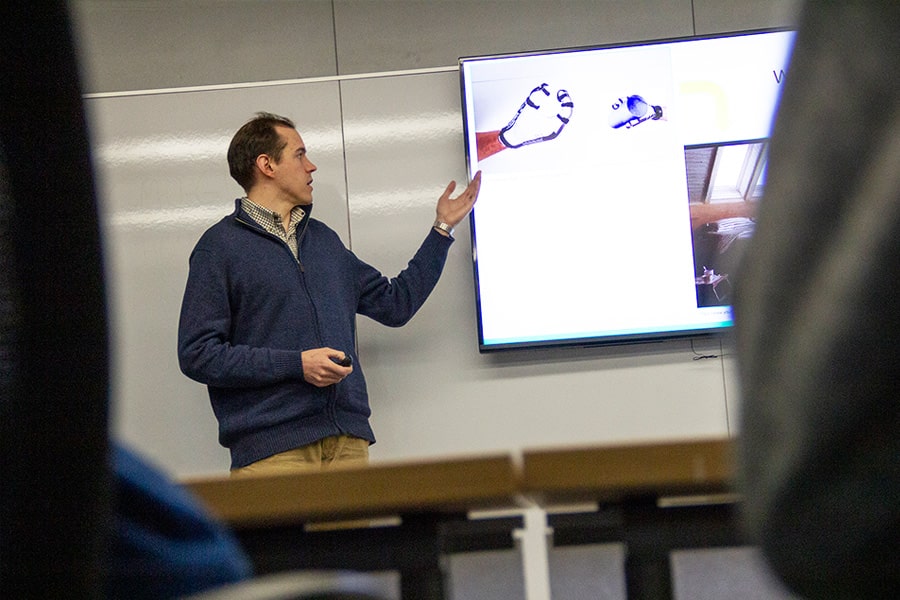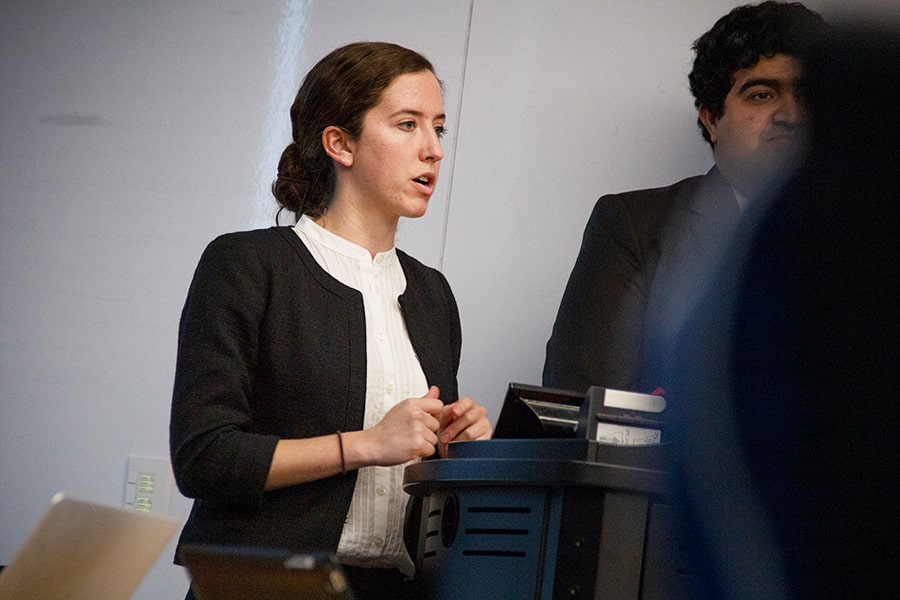Course Crunches Numbers for CMU Entrepreneurs
Katie Whitefoot, assistant professor of engineering and public policy (EPP) and mechanical engineering (MechE), is working to bring the hidden world of cost analysis and market competitiveness into the light with her Carnegie Mellon University course, "Quantitative Entrepreneurship: Analysis for new technology commercialization (QE)."
"As opposed to other courses where commercialization is talked about more qualitatively from a business standpoint — about how you get investment and how you start up a business — this course really teaches quantitative modeling skills to inform entrepreneurial decisions," Whitefoot said.
Graduate students entering the course are broken into groups and are paired with a sponsor interested in commercializing a new technology. Sponsors often include faculty members from within the College of Engineering, who may be looking to test the commercial viability of their own creations.
This year's projects were a 3D printed bike frame, from Sangjin Jung, a postdoctoral student in Whitefoot's lab; an improved process for creating silicon wafers for solar panels from Chemical Engineering Professor Erik Ydstie, chairman of Solar Silicon LLC; and an electrostatic clutch for use in virtual reality (VR) systems from Stuart Diller, a postdoctoral student in Associate Professor Carmel Majidi's Soft Machines Lab.
 Stephen Thomsen, a student in the dual degree master's program between Mechanical Engineering and Engineering & Technology Innovation Management presents during class.
Stephen Thomsen, a student in the dual degree master's program between Mechanical Engineering and Engineering & Technology Innovation Management presents during class.
During the first part of the course, students model the production process and determine the cost of the materials and equipment necessary to manufacture their product at scale. In the second part they use this information to create and distribute a survey targeting potential customers, using their results to determine how altering the product design might affect customer response.
In the final part of the course the students combine the data they have gathered and use it to provide recommendations for the sponsors about if and how to proceed with production and design in order to successfully commercialize their product. These are presented during the student presentation at the end of the semester.
"I hear from the students that they like how the course goes into depth with decision tools, and they can understand where it's coming from — the math behind describing a production facility and how product design influences the performance of their product," Whitefoot said. "They can relate these to the impact of their decisions in getting products out into the world."
The electrostatic clutch, able to simulate the sensation of physical resistance, shows a promising edge over similar systems being developed for use in virtual reality. Ydstie's horizontal ribbon growth (HRG) process for creating solar panels is two-thirds the cost of current production methods, and customer surveys found that offering long-term warranties could increase profitability. The profitability analysis for Jung's 3D printed bike frame was inconclusive due to a lack of information, but students found that customers preferred a lighter frame made of high-quality material.
 Elizabeth Alexander, a graduate student in Civil and Environmental Engineering, presents.
Elizabeth Alexander, a graduate student in Civil and Environmental Engineering, presents.
All of this was determined by the students and will aid their sponsors in their future commercialization efforts. In some instances, students have been asked to continue working with sponsors or were hired due to their performance during the course. Many use their projects as a demonstration of the skills they've learned, and as major talking points with prospective employers.
"The course provided me with expertise I was able to take with me to industry and consulting, and I've also used it in my research as a Ph.D. student," said Ria Laureijs, a teaching assistant and alumna of a similar production modeling course that preceded Whitefoot's. "The course content is some of the most useful and practical I have had in my education to date."
Laureijs held several related industry positions after graduating with her master's in Engineering and Technology Innovation Management, before returning to Carnegie Mellon to pursue her Ph.D. in Engineering and Public Policy.
Ben Reibman, an alumnus of Mechanical Engineering who worked in the group with Diller's electrostatic clutch, feels that the course experience will be a boon to his entrepreneurial ambitions going forward.
"I definitely feel I've gained an understanding for technology commercialization, which is normally beyond the scope of a traditional mechanical engineering course," Reibman said. "I now understand how to go from 'I have a process,' to researching how I will scale that process, price that process and determine whether or not it's commercially viable to use that technology."